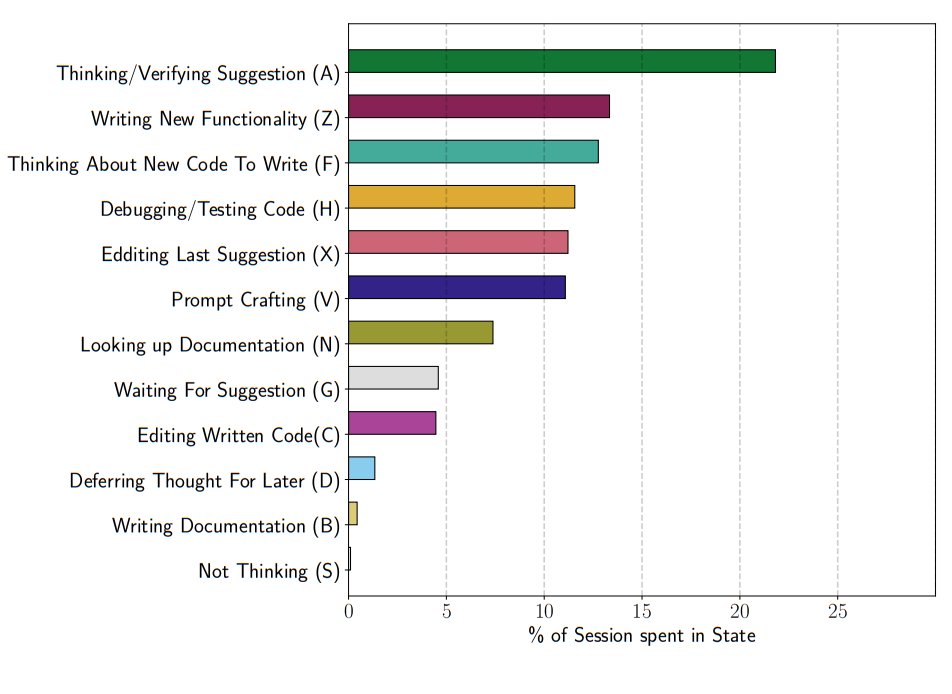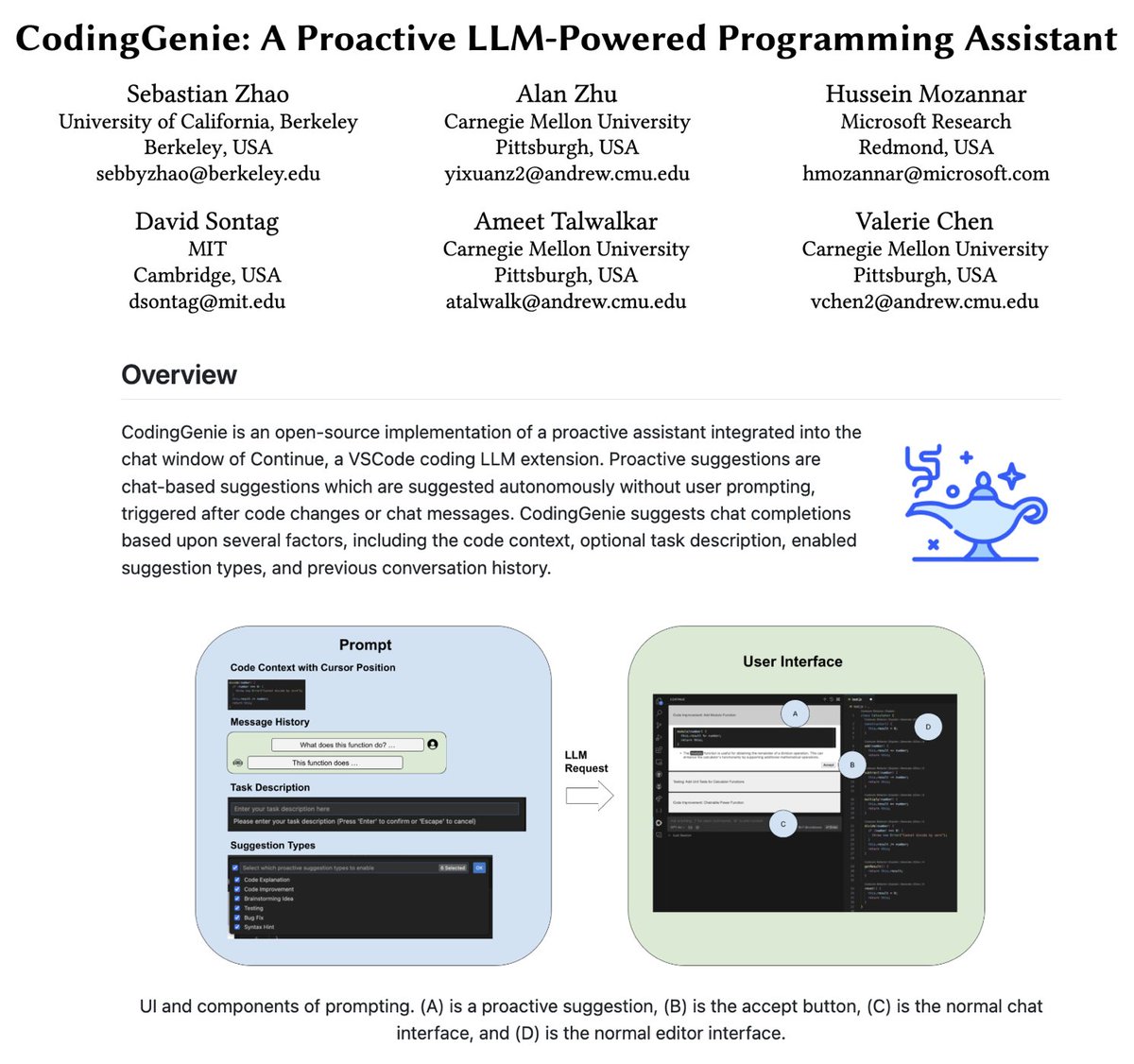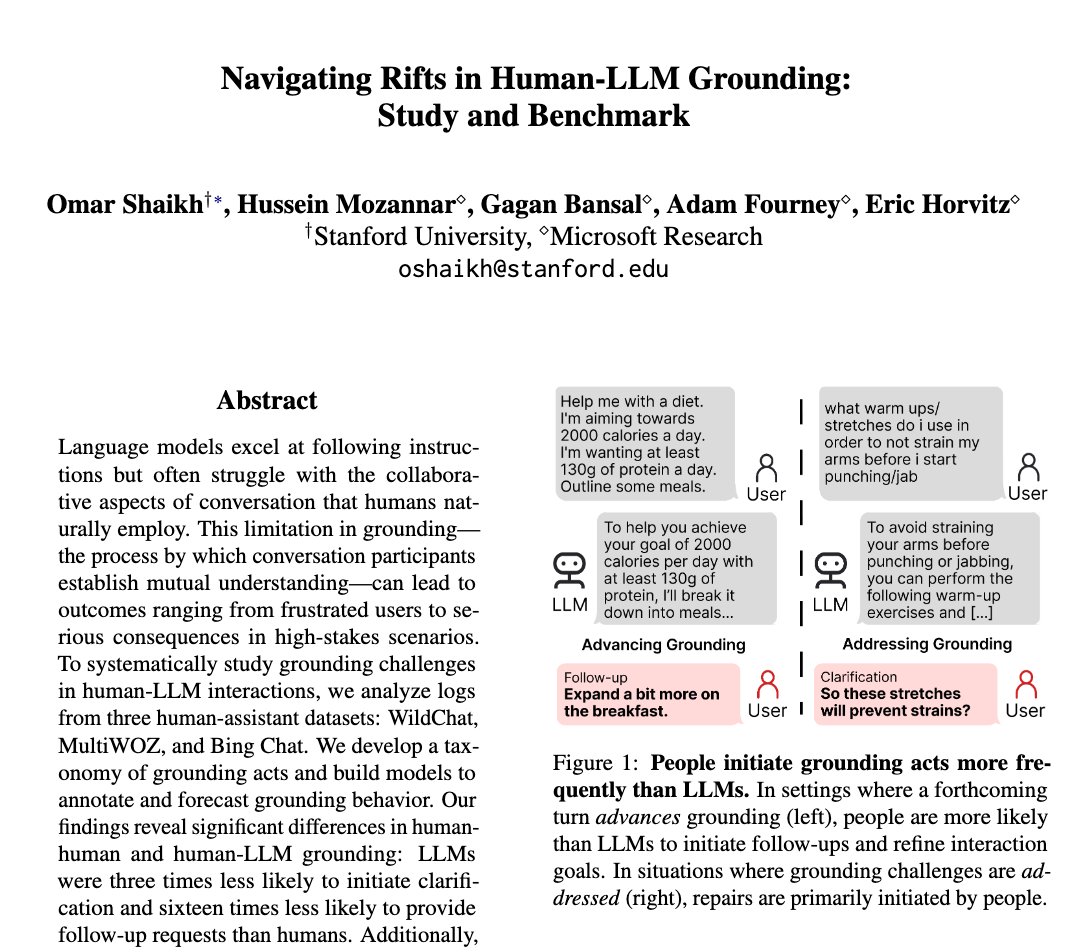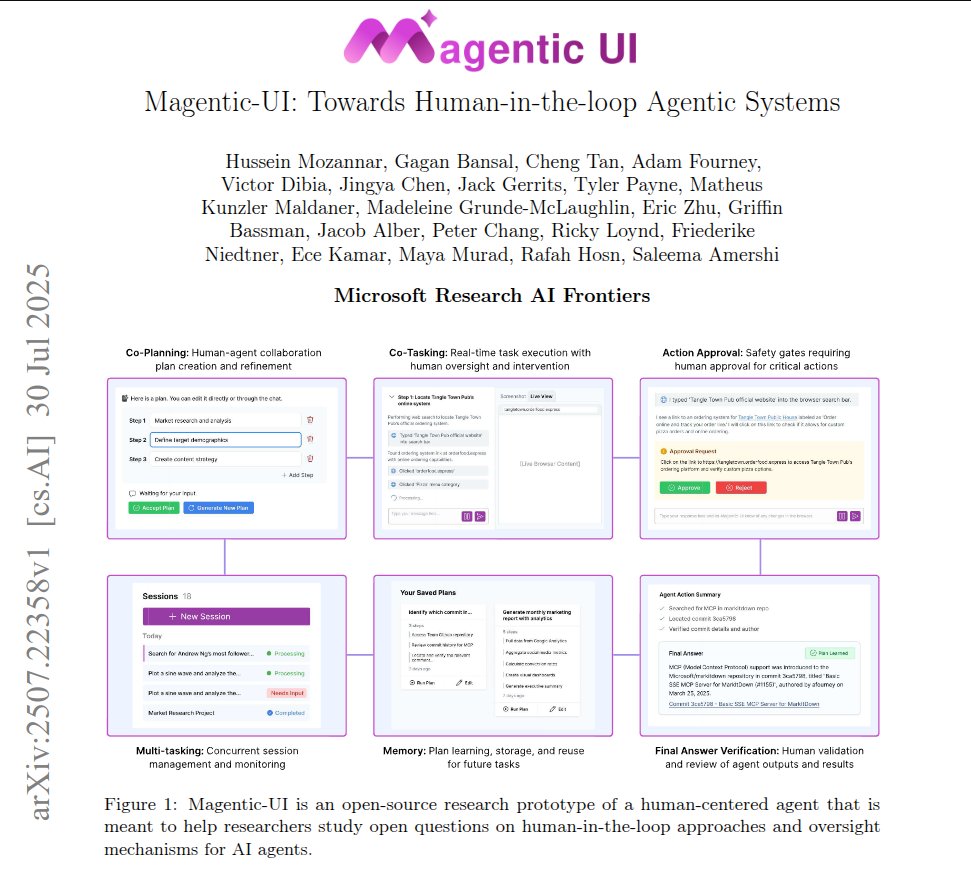
Hussein Mozannar
@hsseinmzannar
AI Researcher @MSFTResearch | PhD @mitidss | 🇱🇧
ID: 451752920
https://husseinmozannar.github.io/ 31-12-2011 23:51:47
270 Tweet
1,1K Followers
1,1K Following




This is really interesting! I'm really surprised by this negative result of AI for coding as it goes against some of my work and the literature so we need to understand why. I found this graph really cool as it mirrors our CUPS work on Copilot with Gagan Bansal Eric Horvitz



Had a blast working on this during my internship at Microsoft Research with wonderful collaborators Hussein Mozannar, Gagan Bansal, Adam Fourney, and Eric Horvitz Finally, here’s the RIFTS dataset: huggingface.co/datasets/micro… And the paper: arxiv.org/abs/2503.13975





